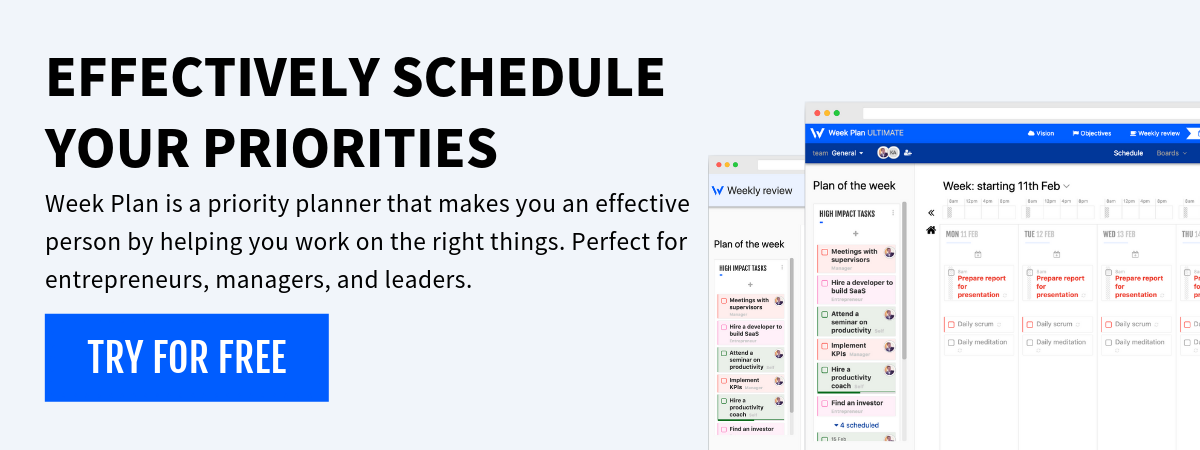Time blocking is a technique that has changed the way we approach our daily tasks. It involves allocating specified time to individual tasks or groups of tasks, thereby creating a structured schedule. This technique is essential if you want to maximize your time management and productivity.
Key Takeaways:
Time blocking is a time management method where you break your day into blocks of time. Each block is devoted to completing a certain task or group of tasks. This technique aids in minimizing distractions and boosting productivity.
Types Of Time Blocking
A variety of time blocking techniques can be used by professionals and individuals to manage their schedules effectively. Each type offers a unique approach to distributing tasks and managing time. Here are the key types:
Traditional Time Blocking:
This involves time planning for individual tasks or groups of tasks in your day. For example, block off 9:00 AM to 10:00 AM for answering emails and 2:00 PM to 4:00 PM for a project meeting.
Task Batching:
Similar tasks are combined into a single time block. This technique maximizes focus and minimizes context switching.
Day Theming:
Each day of the week is dedicated to a different task or theme. For example, Mondays are for meetings, while Tuesdays are dedicated to creative work.
Time Boxing:
It is similar to traditional time blocking but strongly emphasizes restricting the amount of time spent on a task. Every task or activity has a fixed ‘box’ of time, and once that time expires, you go on to the next task regardless of the progress.
Priority-Based Time Blocking:
This method blocks time for tasks based on their priority level. High-priority tasks get scheduled first, ensuring that the most critical work is completed.
Time Blocking Variations
You can adjust Time blocking according to the length of time blocks or the type of tasks assigned to each block. This flexibility makes it suitable for different workflows and personal preferences.
Why Does Time Blocking Work So Well?
Time blocking is incredibly beneficial for several reasons, the most important of which is that it makes the best use of time, which is one’s most finite resource. The following explains why time blocking works so:
- Goal Planning
- Improved Productivity
- Tracks and Measures Progress
- Helps in Maintaining Work-Life Balance
Will Time Blocking Work With My Job?
Time blocking is flexible and can be made to work for nearly any type of job. Time blocking can be customized to meet your demands regardless of how strict or flexible.
How to Time Block Your Calendar?
Examine your calendar and task list first. Set aside specific times for every work. You can visualize and manage your weekly plan much more easily with the help of tools like Google Calendar.
Boosting Productivity with Time Blocking
Time blocking can significantly boost your productivity. It helps you focus on one task at a time and reduces distractions.
Best Practices for Time Blocking
- Set Clear Goals
- Create a To-Do List
- Practice Task Batching and Day Theming
- Use Time Management Templates
- Allow for Flexibility
Conclusion
Time blocking is one of the most effective tools for organizing your calendar and increasing productivity. It greatly improves task efficiency and time management but requires ongoing learning and modification.
FAQs
How should time blocking be started?
Prioritize and list your duties first, then set aside time slots in your calendar.
Does time blocking help in reducing stress?
Yes, time blocking might help you feel less stressed since it helps you organize your tasks and maintain focus.
What is the ideal duration for each time block?
The duration of the time blocks can change based on the task and your preferences.
How long should each time block be?
The length of time blocks can vary based on the task and your personal preference. Experiment to find what works best for you.
Is time blocking suitable for everyone?
Time blocking is very flexible and can be made to match different tastes and work habits.
Once my time blocks are set, can I change them?
Yes, the secret to successful time blocking is flexibility. If necessary, reorganize your time blocks.

More Posts
12 Benefits of Using Hourly Calendar for A Week
A well-managed hourly calendar boosts weekly schedule and daily productivity. It helps break tasks into smaller parts. This makes it easier to set priorities and hit goals. Studies show that writing down goals...
12 Ways Overthinking Contributes to Procrastination
Procrastination affects about 20% to 25% of adults. It leads to bad sleep, less exercise, and feeling alone. Overthinking is a big reason why people put things off. By knowing how overthinking stops us from finishing tasks, we...
7 Project Time Tracking Software Tools for Project Managers
Project managers, have you ever felt the weight of managing tasks and tracking time for your entire team? Say no more. Today, let’s dive into seven incredible real-time software tools for managing and...
10 Best Task Management Software for Small Teams
In today’s fast-paced world, small teams simultaneously juggle multiple tasks and projects. With deadlines hanging over your head and team members spread out across different roles, it becomes essential to use task management...


